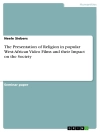In ‘Manx Fairy Tales, ‘ Sophia Morrison masterfully compiles a rich tapestry of folklore that embodies the enchanting spirit of the Isle of Man. A product of her deep understanding of local oral traditions, this collection features tales brimming with whimsical characters, ethereal beings, and moral lessons rooted in the unique cultural landscape of Manx society. Morrison’Äôs prose elegantly mirrors the cadence of traditional storytelling, blending lyrical language with evocative imagery that invites readers into a world where the fantastical intertwines with the familiar, reflecting the island’s historical context and cultural heritage. Sophia Morrison (1859’Äì1917) was a pioneering scholar of Manx folklore and a formidable advocate for the preservation of her native culture. Her lifelong dedication to collecting and documenting the stories of the Isle of Man stemmed from her own formative experiences within a community rich in tradition. As a member of a family with deep roots on the island, Morrison’Äôs works reveal not only her academic prowess but also her intrinsic connection to the landscape and tales that define her homeland, making her an essential voice in the preservation of Manx identity. ‘Manx Fairy Tales’ is a treasure for those drawn to folklore, mythology, and the enchanting realm of storytelling. It serves as an essential resource for scholars and enthusiasts alike, providing a captivating glimpse into the magical narratives that have shaped island culture. Morrison’Äôs collection ultimately serves as a timeless reminder of the power of stories to bridge generations and preserve cultural legacies.
Sophia Morrison
Manx Fairy Tales [EPUB ebook]
Exploring the Enchanting Folklore of the Isle of Man
Manx Fairy Tales [EPUB ebook]
Exploring the Enchanting Folklore of the Isle of Man
قم بشراء هذا الكتاب الإلكتروني واحصل على كتاب آخر مجانًا!
لغة الإنجليزية ● شكل EPUB ● صفحات 214 ● ISBN 4057664100993 ● حجم الملف 0.7 MB ● الناشر Good Press ● مدينة Prague ● بلد CZ ● نشرت 2019 ● للتحميل 24 الشهور ● دقة EUR ● هوية شخصية 7508809 ● حماية النسخ DRM الاجتماعية












